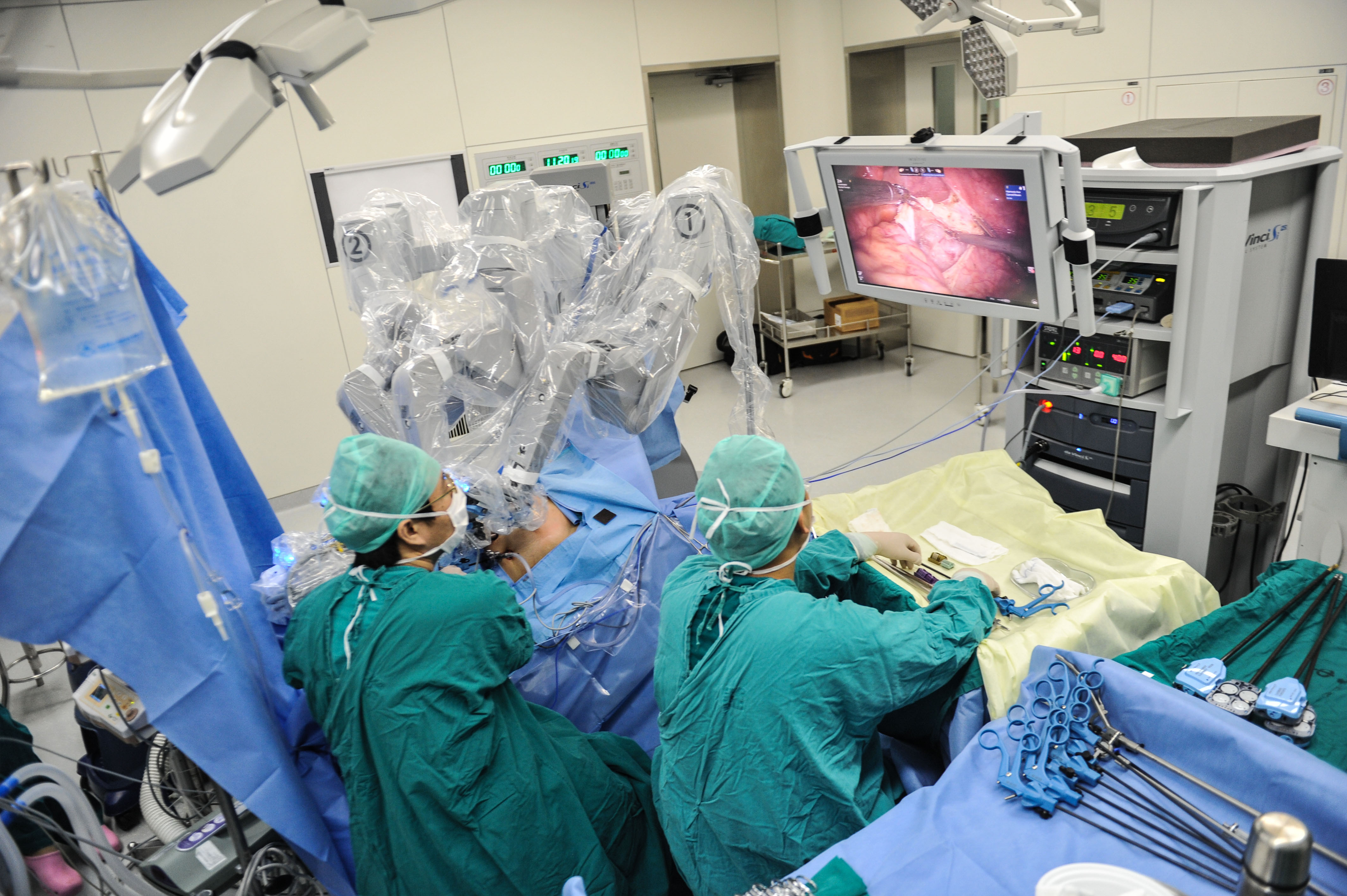This robot surgeon could revolutionize operations
A prototype already has the dexterity and skill to outperform human doctors


Who's the ideal surgeon? Someone savvy; someone skilled. Someone efficient and dexterous. To most people, that job description sounds like one for the most educated, well-trained medical professionals. But to Peter Kim, a general and thoracic surgeon, that job description sounds ideal for someone — or something — else: a robot.
Kim is among the researchers who have created what they call STAR (Supervised Autonomic Robot). It's a robot that can do everything a human surgeon can, only better. And unlike its mechanized predecessors, it can operate on soft tissue within the body.
The robot, which is described in a recent paper in the journal Science Translational Medicine, has an arm fitted with a surgical tool, a force sensor, and a vision system. Under the supervision of Kim and his team, STAR was able to perform complex surgeries on pig intestines. (Pigs' internal anatomy is much like that of humans.) When the surgical results were compared to those of human surgeons, the ones performed by the robot were more consistent and had fewer mistakes.
The Week
Escape your echo chamber. Get the facts behind the news, plus analysis from multiple perspectives.

Sign up for The Week's Free Newsletters
From our morning news briefing to a weekly Good News Newsletter, get the best of The Week delivered directly to your inbox.
From our morning news briefing to a weekly Good News Newsletter, get the best of The Week delivered directly to your inbox.
"The outcome, to our surprise, was comparable and better," says Kim, who also helps lead the Sheikh Zayed Institute for Pediatric Innovation and who is the surgeon-in-chief for the Children's National Health Joseph E. Robert, Jr. Center for Surgical Care. He says that when it came to creating a robot capable of doing surgery at or above the level of its human counterparts, he knew it would need high-level vision, dexterity, and a little bit of intelligence to make the grade. ("Not a huge amount," he laughs.)
In this case, "intelligence" came via a computer algorithm based on the best surgical techniques. The algorithm interacted with the robot's 3D imaging system and used sub-millimeter positioning capabilities to hone in on tight spots and create a suture plan with just the right needle depths and sewing forces.
One way the robot beats humans is by doing the same thing every time. Since it draws on best practices, it's sure to use the most cutting-edge or appropriate techniques — a leg-up on surgeons who either don't have experience with a certain procedure or who have outdated knowledge. And unlike humans, it never forgets basics or gets distracted.
"Sometimes doing 19 things out of 20 isn't good enough," says Kim. "You've got to do 20 things out of 20." In 2009, surgical complications killed around 80 of every 100,000 Americans; Kim hopes that, with the help of robots like STAR, that number could be slashed. Because a robot could be programmed with the most recent knowledge, it wouldn't need to go to med school or take continuing education courses to keep its skill set current. "Imagine that you [could] program consensus or cumulative knowledge and have that available to all surgeons," says Kim. "That would fundamentally make outcomes better."
A free daily email with the biggest news stories of the day – and the best features from TheWeek.com
Though the robot was slower than a human surgeon, Kim isn't bothered by its speed. "Sometimes parents ask me, when I operate on their children, how long is this going to take?" he says. "I joke to relieve the tension. I tell them I can do it as fast as [they] would like and then they say, 'Oh no, please take as much time as you need.'" The robot surgeon is similar, he says — now that the team has proof of concept, they can focus on making the machine even faster.
So could creating a robot that can sew pig intestines back together one day put Kim himself out of a job?
If so, that's okay, he says. "The optimum goal is not to replace surgeons, but to give them the tools that can work with them to enhance their capacity and capability. As a surgeon, why wouldn't I want a tool like that? Why would I not want to give up a little bit of control so that the outcome is better?"
Erin Blakemore is a journalist from Boulder, Colorado. Her work has appeared in The Washington Post, Time, Smithsonian.com, mental_floss, Popular Science and more.


